Dappled Flounder, Paralichthys woolmani
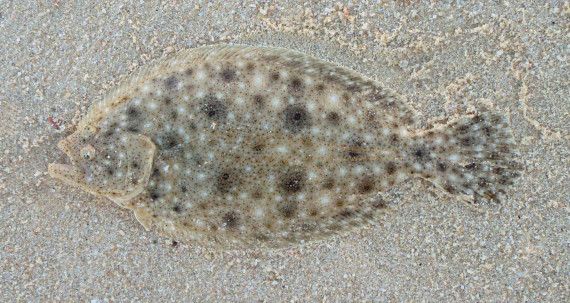 Dappled Flounder, Paralichthys woolmani. Fish caught off the beach at Point Palmilla, Baja California Sur, January 2009. Length: 32 cm (13 inches).
Dappled Flounder, Paralichthys woolmani. Fish caught off the beach at Point Palmilla, Baja California Sur, January 2009. Length: 32 cm (13 inches).
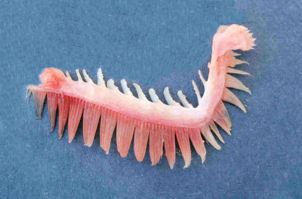 Dappled Flounder, Paralichthys woolmani, Gill Rakers. A count of between 16 and 20 is essential for a correct identification.
Dappled Flounder, Paralichthys woolmani, Gill Rakers. A count of between 16 and 20 is essential for a correct identification.

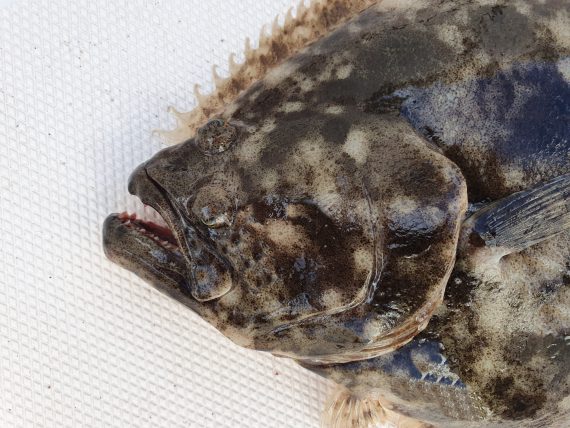
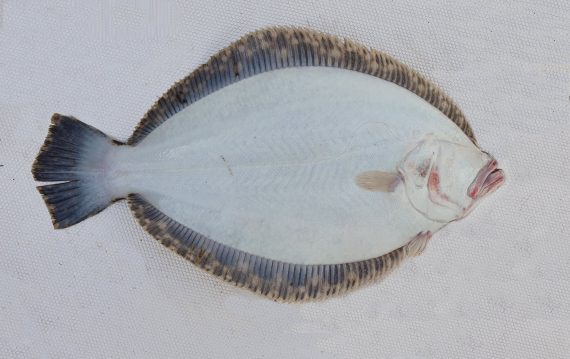
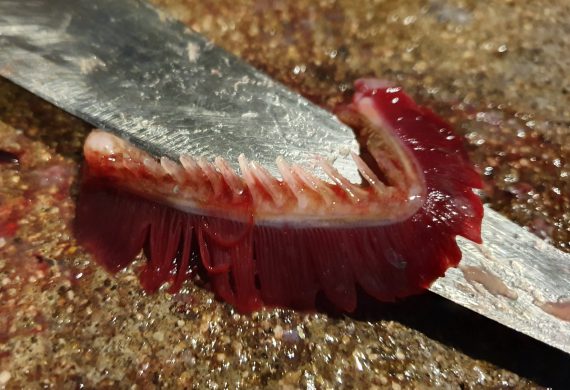 Dappled Flounder, Paralichthys woolmani. Fish caught from coastal waters off Loreto, Baja California Sur, November 2019. Catch by German Martinez, Loreto. Photographs courtesy of Chris Wheaton, Fullerton, California.
Dappled Flounder, Paralichthys woolmani. Fish caught from coastal waters off Loreto, Baja California Sur, November 2019. Catch by German Martinez, Loreto. Photographs courtesy of Chris Wheaton, Fullerton, California.
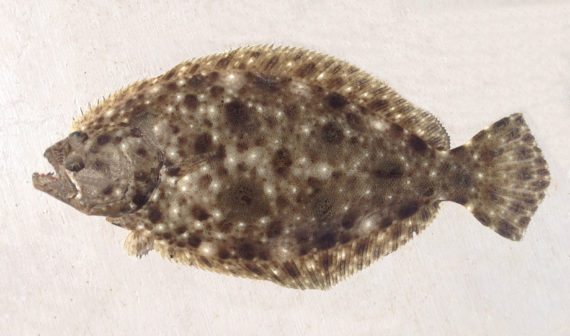
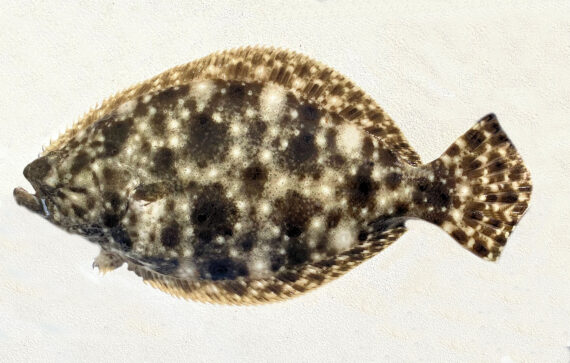 Dappled Flounder, Paralichthys woolmani. Both fish caught from within Magdalena Bay, Baja California Sur, January 2017 and December 2021, respectfully. Length: 33 cm (13 inches) and 37 cm (15 inches). Catches and photographs courtesy of Brad Murakami, Surrey, British Columbia, Canada.
Dappled Flounder, Paralichthys woolmani. Both fish caught from within Magdalena Bay, Baja California Sur, January 2017 and December 2021, respectfully. Length: 33 cm (13 inches) and 37 cm (15 inches). Catches and photographs courtesy of Brad Murakami, Surrey, British Columbia, Canada.
 Dappled Flounder, Paralichthys woolmani, Male. Fish provided by the commercial fishermen of the greater Los Cabos area, Baja California Sur, June 2010. Length: 36 cm (14 inches).
Dappled Flounder, Paralichthys woolmani, Male. Fish provided by the commercial fishermen of the greater Los Cabos area, Baja California Sur, June 2010. Length: 36 cm (14 inches).
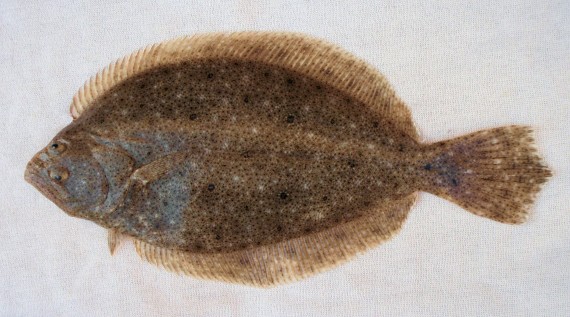
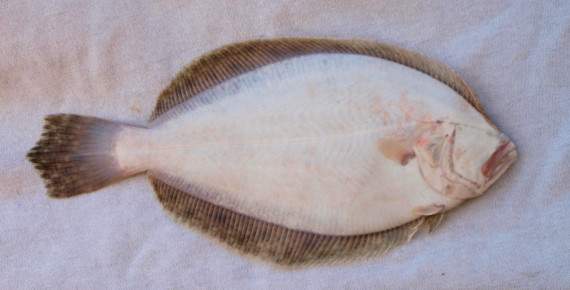 Dappled Flounder, Paralichthys woolmani. Fish provided by the commercial fishermen in the greater Los Cabos area, Baja California Sur, April 2009. Length: 36 cm (14 inches).
Dappled Flounder, Paralichthys woolmani. Fish provided by the commercial fishermen in the greater Los Cabos area, Baja California Sur, April 2009. Length: 36 cm (14 inches).
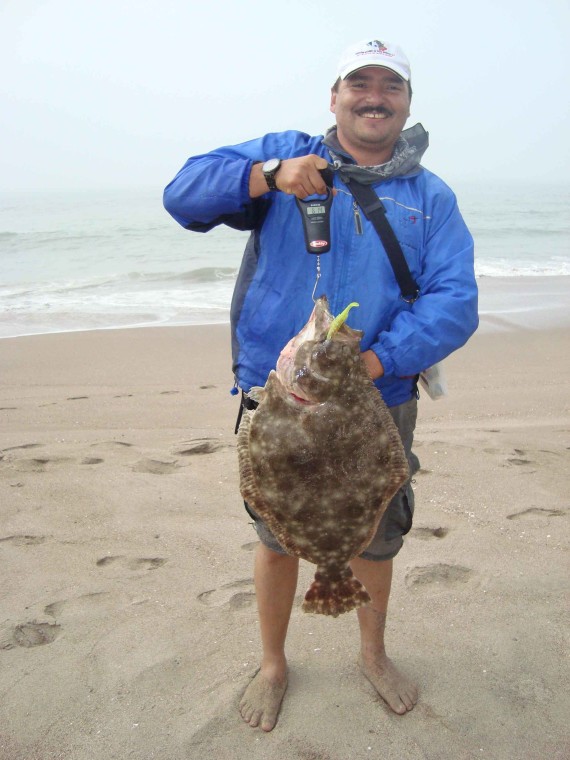 Dappled Flounder, Paralichthys woolmani. Fish caught from shore North of Mazatlán, Sinaloa, December 2012. Length 70 cm (2 feet 4 inches). Weight: 5.5 kg (12 lbs). Catch courtesy of Julio Ramirez, Mazatlán. Photograph courtesy of Jason Potts, Mazatlán, Sinaloa.
Dappled Flounder, Paralichthys woolmani. Fish caught from shore North of Mazatlán, Sinaloa, December 2012. Length 70 cm (2 feet 4 inches). Weight: 5.5 kg (12 lbs). Catch courtesy of Julio Ramirez, Mazatlán. Photograph courtesy of Jason Potts, Mazatlán, Sinaloa.
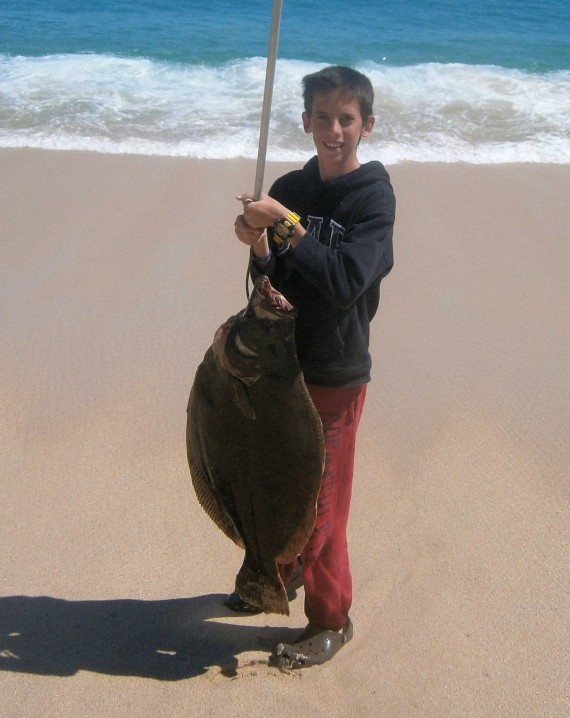 Dappled Flounder, Paralichthys woolmani. Fish caught from coastal waters off Point Palmilla, Baja California Sur, February 2015. Length: 89 cm (2 feet 11 inches). This fish extends the known maximum length for this species by a full 9 cm (3.5 inches). Catch courtesy of Mauricio Correa, Cabo Real, Baja California Sur.
Dappled Flounder, Paralichthys woolmani. Fish caught from coastal waters off Point Palmilla, Baja California Sur, February 2015. Length: 89 cm (2 feet 11 inches). This fish extends the known maximum length for this species by a full 9 cm (3.5 inches). Catch courtesy of Mauricio Correa, Cabo Real, Baja California Sur.
The Dappled Flounder, Paralichthys woolmani, is a member of the Sand Flounder or Paralichthyidae Family, that is also known as the Speckled Flounder and in Mexico as lenguado huarachero. Globally, there are twenty-one members of the genus Paralichthys, of which six are found in Mexican waters, three in the Atlantic and three in the Pacific Ocean.
The Dappled Flounder has an elongated oval deep body that has a depth that is 40% to 44% of standard length. They are left-eyed flatfish of which a small percentage of the population is right-eyed. They can vary significantly and quickly in color to match their substrates. Their eye side can vary from tan to dark brown (pictured below) and is covered with dark round spots and smaller pale round spots. Their fins are similar to the body color but have darker markings toward the rear of their body. Their blind side is off-white to tan; a certain percentage of the male population has a dark brown blind side. They have a short pointed head with a relatively large mouth that ends under the rear edge of their lower eye. Their eyes are found on the left side and are set apart with the top eye being slightly behind the lower eye. They have one row of teeth on both jaws with large canines in the front. Their anal fin has 52 to 64 rays; their caudal fin is small, short, wide, and slightly doubly concave; and their dorsal fin has 70 to 81 dorsal rays and originates over the upper eye. They have 16 to 20 gill rakers. Both eye and blind sides are covered with smooth scales. Their lateral line is arched and extends onto their head and branches into the top eye and below the lower eye.
The Dappled Flounder is a demersal species found over and within sandy and muddy bottoms at depths up to 90 m (300 feet). They are also known to enter brackish waters. They reach a maximum of 89 cm (2 feet 11 inches) in length, as established by the fish photographed above caught by good friend Mauricio. They are opportunistic and well-camouflaged ambush predators that lie in wait half submerged on the ocean floor. The Dappled Flounder is poorly studied with very limited information available about their lifestyle and behavioral patterns including specific details on age, growth, longevity, movement patterns, diet, habitat use, and reproduction.
The Dappled Flounder is a resident of found in all Mexican waters of the Pacific Ocean with the exception that they absent from Magdalena Bay, Baja California Sur, northward along the central and northwest coasts of Baja.
The Dappled Flounder is most likely confused with the California Halibut, Paralichtys californicus (doubly concave tail and at least 25 gill rakers) and the Cortez Halibut, Paralichtys aestuarius (broad head profile, no spots on its body, smaller wide fan-like caudal fin and at least 24 gill rakers).
From a conservation perspective the Dappled Flounder is current considered as Data Deficient. They are considered to be an exceptional food fish and are sold commercially, but are uncommon. Note: efforts to introduce this species to the Salton Sea in the early 1950’s failed.